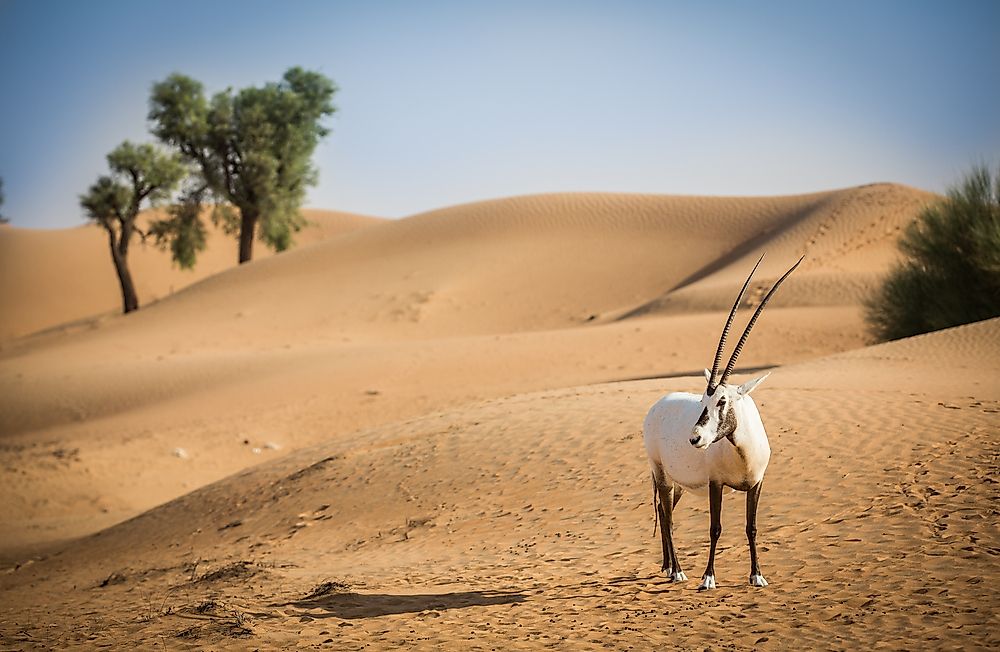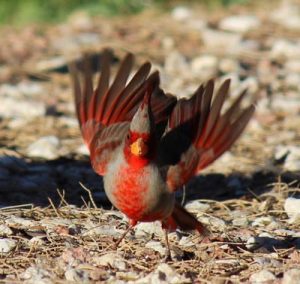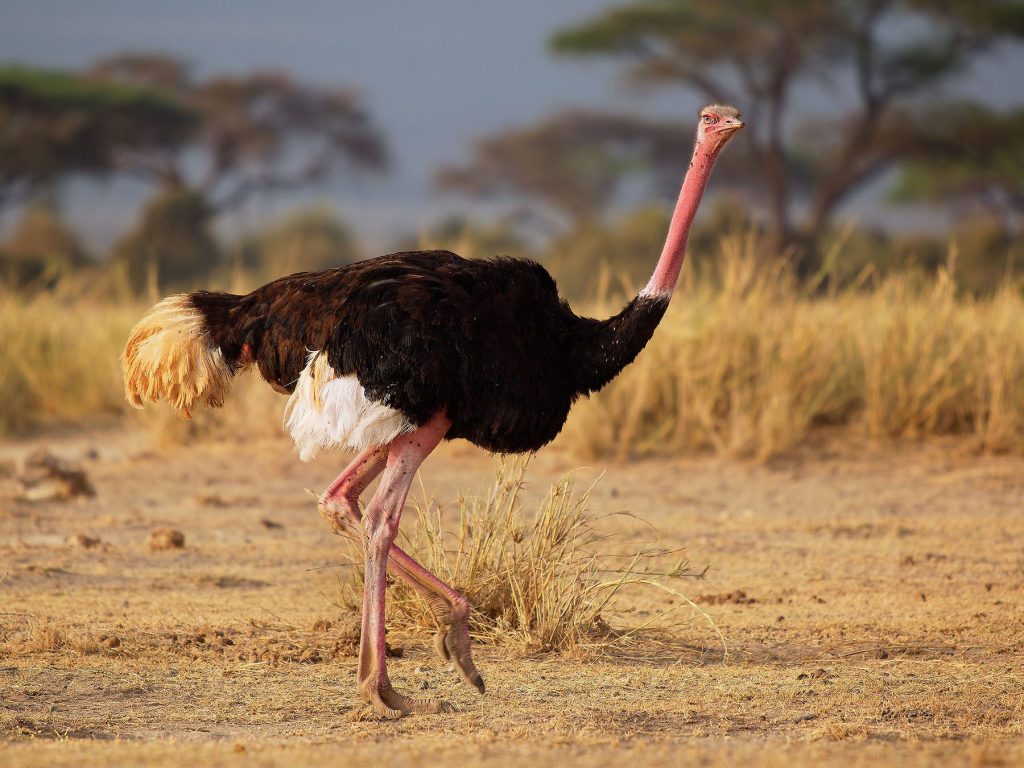Have you ever wondered which birds can survive in the harsh, dry desert? You might think deserts are too hot and empty for birds to live in, but some species have amazing ways to thrive there.
If you want to discover these incredible desert birds and learn how they beat the heat and find food, keep reading. Your curiosity about nature’s toughest flyers is about to be rewarded!

Credit: www.worldatlas.com
Desert Habitats And Challenges
Birds that live in deserts face many challenges. These areas have little water and tough climates. Birds must adapt to survive.
Desert habitats are dry and hot. They have unique plants and animals. Birds find food and shelter in these harsh places.
Climate And Terrain
Deserts have dry climates with very little rain. The land can be sandy, rocky, or filled with dunes. This terrain makes it hard for birds to find food and water.
Many desert birds live in open areas. They use rocks and sparse plants for shelter. The terrain shapes how they move and hunt.
Scarcity Of Water
Water is very scarce in deserts. Birds must find water sources or get moisture from food. Some can survive long times without drinking.
- Drink from small pools or dew
- Eat plants or insects with water
- Reduce water loss by staying cool
Extreme Temperatures
Deserts have very hot days and cold nights. Birds stay active by resting in shade during heat. They also fluff feathers to keep warm at night.
- Seek shade during midday heat
- Fly early in the morning and late afternoon
- Use body features to control temperature

Credit: www.youtube.com
Top Desert Birds
Deserts are home to many unique birds. These birds have special traits to live in dry places.
Let’s learn about some of the most common desert birds. They survive with little water and hot sun.
Roadrunner
The roadrunner is a fast bird found in deserts. It runs on the ground and catches small animals.
This bird can fly but prefers to run. It eats insects, lizards, and small snakes.
Sandgrouse
Sandgrouse live in dry desert areas. They have strong wings to fly long distances for water.
These birds carry water in their feathers to feed their chicks. They eat seeds and plants.
Greater Roadrunner
The greater roadrunner is larger than the common roadrunner. It lives in deserts of the southwestern US.
It hunts small animals and can run very fast. It uses its strong legs to catch prey.
Burrowing Owl
Burrowing owls live in underground burrows in the desert. They are small owls with long legs.
These owls hunt insects and small rodents. They are active during the day and night.
Adaptations For Survival
Birds that live in the desert face many challenges. They must survive with little water and extreme heat. Their bodies and behaviors help them live in these tough conditions.
Desert birds have special ways to save water, control their body heat, and hide from predators. These adaptations keep them safe and healthy.
Water Conservation Techniques
Desert birds get very little water from their environment. They use clever ways to save and reuse water inside their bodies. Some birds get water from the food they eat.
They also produce very little urine and dry droppings to keep water in their bodies. This helps them stay hydrated for a long time.
- Extract water from seeds and insects
- Produce concentrated urine to save water
- Minimize water loss through breathing
Heat Regulation
Desert birds face very hot days. They use several ways to keep their body temperature safe. Some birds stay in the shade during the hottest time.
They also use their feathers to protect from heat. Some birds open their beaks and breathe fast to cool down. Their blood flow changes to release heat.
- Rest in shaded or cool areas
- Use feathers to block sunlight
- Pant to lose heat through breathing
- Adjust blood flow near skin surface
Camouflage And Nesting
Desert birds blend with their environment to avoid predators. Their colors match the sand and rocks around them. This makes them hard to see.
They build nests in hidden or safe places. Some nests are made in burrows or under plants to protect eggs and chicks from heat and enemies.
- Feather colors match desert sand and rocks
- Nests hidden in plants or under rocks
- Use burrows or small holes for shelter

Credit: lafeber.com
Feeding Habits In Arid Zones
Birds living in deserts face tough conditions. Food is scarce and water is limited. Their feeding habits help them survive in dry areas.
These birds have unique ways to find and eat food. They adapt to the harsh desert environment to stay healthy.
Diet Diversity
Desert birds eat many types of food. They eat seeds, insects, small animals, and plants. This variety helps them find food anytime.
Some birds eat mostly seeds. Others hunt insects or small reptiles. Eating different foods helps them survive when one source is low.
- Seeds from desert plants
- Insects like ants and beetles
- Small reptiles and rodents
- Fruits and flowers after rain
Hunting And Foraging Strategies
Desert birds use smart ways to find food. They search early in the morning or late at night to avoid heat. They also watch closely for moving prey.
Some birds dig in the sand for insects. Others catch flying insects while in the air. They use their sharp eyes and quick movements to catch food.
- Forage during cooler parts of the day
- Use sharp eyesight to spot prey
- Dig or probe soil for hidden insects
- Catch insects while flying
Reproduction And Raising Young
Birds that live in the desert have special ways to reproduce and care for their young. They face many challenges like heat and scarce water.
These birds have adapted their nesting and parenting habits to survive in harsh desert conditions.
Nesting Sites
Desert birds choose safe and cool places to build their nests. They use natural shelters to protect their eggs from heat and predators.
- Some nest in bushes or trees that provide shade.
- Others dig small holes or burrows in the ground.
- Some build nests in rocky crevices or cliffs.
- Many use materials like twigs, leaves, and feathers to insulate nests.
Parental Care
Desert birds work hard to care for their eggs and chicks. Both parents often share duties to keep the young safe and fed.
| Parental Task | Description |
|---|---|
| Incubation | Parents take turns warming the eggs to help them hatch. |
| Feeding | Parents bring food like insects and seeds to the chicks. |
| Protection | They guard the nest from predators and extreme heat. |
| Teaching | Parents help young birds learn how to find food and survive. |
Human Impact And Conservation
Desert birds face many challenges because of human actions. These birds live in harsh environments and are sensitive to changes. Protecting them needs careful effort and understanding.
This article explains the main threats to desert birds and shows how people can help protect them. We will look at problems caused by humans and the ways to conserve these special birds.
Threats To Desert Birds
Human activities have changed desert habitats. This harms the birds that live there. Some threats include loss of homes, pollution, and climate changes. These dangers reduce bird numbers and affect their health.
- Habitat destruction from building and farming
- Water shortage caused by overuse and drought
- Pollution from chemicals and trash
- Disturbance from off-road vehicles and tourism
- Climate change causing extreme temperatures
Conservation Efforts
People and groups work to save desert birds. They use laws, protected areas, and education to help. These efforts aim to keep birds safe and their homes healthy.
| Conservation Action | Goal | Example |
| Protected Areas | Preserve habitats | Desert wildlife refuges |
| Water Management | Maintain water sources | Artificial ponds for birds |
| Pollution Control | Reduce chemical harm | Regulations on pesticides |
| Public Education | Raise awareness | Community workshops |
| Research | Understand bird needs | Bird population studies |
Frequently Asked Questions
Which Bird Species Live In The Desert?
Desert birds include roadrunners, cactus wrens, and sandgrouse. They are specially adapted to survive extreme heat and scarce water.
How Do Desert Birds Survive Without Much Water?
Desert birds obtain water from food and conserve it by reducing activity during hot hours. They have efficient kidneys to minimize water loss.
What Adaptations Help Birds Live In The Desert?
Desert birds have feathers that reflect sunlight and allow heat dissipation. They also have behavioral adaptations like seeking shade to avoid overheating.
Are There Any Nocturnal Desert Birds?
Yes, some desert birds like owls are nocturnal. They avoid daytime heat by hunting and being active at night.
Conclusion
Desert birds are fascinating survivors. They adapt to the harshest conditions. Their unique skills help them find food and water. These birds include roadrunners, owls, and sparrows. Each plays a vital role in the ecosystem. Observing them offers insights into nature’s resilience.
They teach us about survival and adaptation. Desert birds show life thrives even in tough places. Learning about them deepens our respect for nature. Next time you visit a desert, watch for these amazing creatures. They are true wonders of the wild.
Appreciate their presence and their natural beauty.

